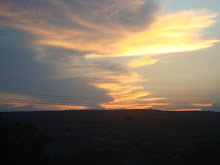The French aircraft carrier Clemenceau has on board 27,000 tonnes of steel, asbestos, PCBs, lead, mercury, and other toxic chemicals. Steel can be recycled and it is said to be the cheapest source. But the objection is about hazardous wastes like asbestos and others mentioned above.
(Nobody knows the exact amount of asbestos on the ship: French reports say it is around 40 to 50 tonnes while some other reports put it above 500 tonnes, still others say it is more than 700 tonnes.)
Clemenceau was off to India to be broken up by hand in Alang ship-breaking yard on the Gujarat coast where impoverished workers are injured and die every day of hazardous asbestos. The international standard for asbestos inhalation by men is less than 5 fibers/litre whereas the inhalation level in these units is more than 300 fibers/litre. No activist has ever raised his or her voice in this regard.
Egypt has serious doubts about the load Clemenceau carries and hence objected to allow passage to the ship thru Suez canal and now the ship has to return to France taking the long route around Africa. The French government is of the opinion that much of the toxic waste of the ship has been removed and hence it is not violating Basel Convention that bans trade on hazardous materials like asbestos.
But environmentalists and activists of "Greenpeace" and “Ban Asbestos Network” say that these are only excuses to dump hazardous wastes in poor countries like India which still do not have strong rules to prevent such dumping. Annually about 600-700 large sea-vessels are brought to Asian countries like India, Bangladesh, Pakistan, China and Turkey for breaking them into scrap affecting the workers and polluting the soil, sea and marine organisms of the area.
Let us face the fact: "Ship breaking units have disastrous consequences on marine ecosystem besides leading to many other social and economic problems". But another angle to the story is that the workers in the Ship breaking units want the ship to come albeit with toxic materials because it provides food to them however toxic it is. The pathetic working conditions, lack of any safety measures, utter disregard for the workers’ rights are terrible.
there are more than 700 large-scale and small-scale industries in India that use asbestos as the raw material; more than 5 lakh people are employed in such industries.
(The Directive Principles of State Policy in Part IV of our Constitution talk of providing ideal working conditions for all but the reality is nowhere near the ideal conditions described there.)
How serious is the risk?
Nearly 50 countries in the world have banned the use of asbestos. The adverse impact of asbestos use has been further established with major Japanese manufacturers having admitted scores of asbestos-related deaths amongst former employees, customers and local people.
The news about the death of 86 former employees of Nichias Corporation due to asbestos-related disease since 1976 (an avg of 3 deaths per year in a single organization over three decades) attracted media attention throughout Japan on July 5, 2005.
There are several other Japanese companies, which have recently disclosed asbestos deaths amongst their workforce. But the extent of the human tragedy due to asbestos exposure remains uncovered in India.
The Union Ministry of Health informed the Parliament in 2003 that studies by the National Institute of Occupational Health, Ahmedabad, have shown that exposure to any type of asbestos can lead to the development of asbestosis, lung cancer and mesothelioma.
White asbestos continues to be in use in India although other kinds such as blue and brown asbestos are banned. About one lakh (0.1 million) workers are directly exposed and 3 crore (30 million) construction workers are being subjected to asbestos dust on a day-to-day basis. Besides the workers, even common citizens are at risk.
Strange Case:
In Canada, there is a "no home use" policy for asbestos but Canada happily exports asbestos to India! In India, the total use of asbestos is 1.25 lakh tonnes, out of which more than 1.0 lakh tonne is being imported.
The ruling of the Supreme Court that the Clemenceau issue should not be discussed in the media raised several eyebrows. What is sub judice? Wait for a later post.
17 February, 2006
Subscribe to:
Post Comments (Atom)

3 comments:
Ha! Whats new? The 3rd world countries are always used as dumping grnds... And the value of human life is always looked down upon over economical benefits andi...
consider this:
1.) Barkha Dutt tells a bomb went off in Srinagar and only 3 people were killed... ONLY 3 people? They are 3 families devastated! Why cant media get THAT?
2.) Chicken legs for example... In US, chicken legs are considered dirty and arent eaten... So all those legs come to the Indian shores so that they can be sold here... profit ki profit disposal ki disposal... howzzat... i 1st came to know of this phenomenon of DUMPING in a mba coaching class... and i was appalled...
yes, The real tragedy is that issues ilke these are so common that we are used to them and stop protesting against them.
"Why can't media get THAT?"
Media? madam, in India, media itself has become "the great Indian media bazar", notable exception being The Hindu group committed to serious journalism.
"and i was appalled..."
Me too.
Yes in the age where aishwarya rais broken ankle gets more TRPS than death counts < 10, the money making factories that these media houses have turned into simply cant resist giving in...
Siddhu, Jadega being roped in for performance analysis of the players, Laloo Ammas of the world hogging the prime time with their cheesy lines...
News channels have indeed turned themselved into the greatest comedy show of all times...
Post a Comment